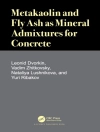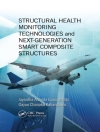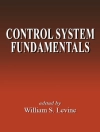This book is the result of an exhaustive review of the general algorithms used for noise reduction using two general application criteria: one-input, one-output systems, and two-input, one-output systems. The text describes theoretically and experimentally the processes related to high-order statistical analysis algorithms, as well as its practical combination with the convolutional analysis. On the other hand, the results of applications in real telecommunications signals, sensing of variables and biosignals such as human tremor are also shown. The reader will benefit from both the theoretical foundations described in the book, and the practical examples including generic codes of all the functions described and modifiable for use in different applications.
This book is an ideal text for engineers, graduate students and scientists involved with noise reduction and signal processing.
Key Features:
- Emphasis on noise reduction techniques
- Accompanying codes
- Interactive elements
- Practical approach
表中的内容
Preface
Acknowledgement
Author biography Glossary
1 Introduction 2 Current trends in signal processing techniques applied to noise reduction
3 Noise reduction in periodic signals based on statistical analysis
Appendix A: Properties of cumulants Appendix B: Moments, cumulants, and higher-order spectra
Appendix C: Calculation of the one-dimensional component of the fourth-order cumulative of a harmonic signal
Appendix D: Calculation of the autocorrelation function of a harmonic signal Appendix E: Examples of codes
关于作者
Miguel Enrique Iglesias Martínez: received a degree in Telecommunications and Electronics Engineering from the University of Pinar del Río (UPR) in 2008 and a Master’s Degree in Digital Systems from the Technological University of Havana, Cuba, in 2011. In 2020 he received a Ph.D. degree in Mathematics from the Universitat Politècnica de València (UPV), receiving the Outstanding Dissertation Award to the best thesis in the area of science. He is currently at UPV, a postdoctoral researcher of the ‘Margarita Salas’ Program, of the Ministry of Universities of the Government of Spain, assigned to the School of Aeronautical and Space Engineering of the University of Vigo. He is also associate researcher at the Instituto Universitario de Matemática Pura y Aplicada (UPV). His research interests include the signals processing, noise analysis, condition monitoring in electrical machines, as well as pattern recognition systems.
Miguel Ángel García March received his Ph.D. in physics in 2008 from the Universitat Politècnica de València (UPV), receiving the Outstanding Dissertation Award. Currently, he is Distinguished Researcher “Beatriz Galindo” at IUMPA – Instituto Universitario de Matemática Pura y Aplicada of the Universitat Politècnica de València. Previously he was Research Fellow at ICFO – The Institute of Photonic Sciences, postdoctoral researcher at University of Barcelona (Spain) and University College Cork (Ireland), MEC/Fulbright fellow at Colorado School of Mines (US), and Postdoctoral Researcher at IFISC – Institute for Cross-Disciplinary Physics and Complex Systems, CSCI-UIB (Spain). His scientific interests include ultracold atoms, open classical and quantum systems, complex quantum dynamics, strongly correlated quantum systems, anomalous diffusion in complex classical environments, few-atom systems, nonlinear and singular optics, quantum simulators and sensors, quantum thermodynamics and relaxation in closed quantum systems. He is the author of more than 60 papers and two books.
Carles Milián Enrique received his Ph.D. in physics in 2012 from the Universitat Politècnica de València, receiving the Outstanding Dissertation Award. Currently, he is a Lecturer at the Department of Applied Mathematics of the Universitat Politècnica de València. Previously he was Post-doctoral researcher at ICFO – The Institute of Photonic Sciences (Spain), at École Polytechnique de Paris (CPHT-Centre de Physique Théorique), and at the University of Bath (UK). His scientific interests are strongly focused in Nonlinear Physics with special emphasis in Nonlinear optics, solitons, dissipative systems, frequency combs, cold plasmas, and opto-mechanics.
Pedro Fernández de Córdoba was born in Valencia in October 1965. He received the B.Sc., M.Sc., and Ph.D. degrees in Physics from the Universitat de València (UV), Valencia, Spain, in 1988, 1990, and 1992, respectively. He also received the Ph.D. degree in Mathematics from the Universitat Politècnica de València (UPV), Valencia, in 1997. His research work was performed at UV, UPV, the Joint Institute for Nuclear Research (Russia), the University of Tübingen (Germany), and the Istituto Nazionale di Fisica Nucleare, Torino, Italy, among others. He is currently Professor at the Department of Applied Mathematics (UPV) and researcher at the Instituto Universitario de Matemática Pura y Aplicada (UPV). His research interests include the area of modelling and numerical simulation of physical and engineering problems. Dr. Fernández de Córdoba is Doctor Honoris Causa from the University of Pinar del Rio (Cuba), Doctor Honoris Causa from Universidad Santander (México), member of the Colombian Academy of Exact, Physical and Natural Sciences, member of the Académie Nationale des Sciences, Arts et Lettres du Bénin, Visiting Professor of the University of Pinar del Río, and Visiting Professor of the Universidad del Magdalena (Colombia). Furthermore, since its establishment on September 30th, 2011, he was member of the Board of the Spanish Mathematics-Industry network (www.math-in.net).












